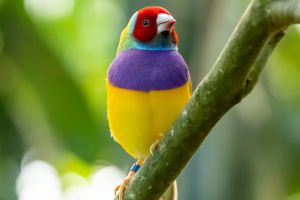Honeybees are often admired for their industriousness, but one of the most fascinating aspects of their behavior is their ability to communicate through dance.
Known as the "waggle dance," these intricate movements convey important information about the location of food sources, the direction of flight, and even the distance to travel.
This silent, yet highly effective, form of communication allows bees to work together in a highly coordinated manner. In this article, we will explore the meaning behind bee dances, how they work, and what makes them so essential to the survival of the hive.
The Science of Bee Dances
Bees are remarkable creatures, capable of navigating vast distances and returning to their hives with remarkable precision. The "waggle dance" is the primary form of communication used by worker bees to convey information about the location of a food source. When a bee finds a patch of flowers rich in nectar, it returns to the hive and performs a unique dance to share this discovery with others.
The waggle dance consists of a series of movements: the bee moves in a figure-eight pattern, wagging its body in the middle of the loop. The direction of the waggle indicates the direction in which the food source is located relative to the sun. The intensity and duration of the waggle phase correspond to the distance the food is from the hive. The longer the waggle, the farther the food source is.
This dance is so precise that other bees, watching the performer, can fly directly to the food source. Bees are also able to adjust the dance based on the time of day, compensating for the movement of the sun.
How the Waggle Dance Conveys Information
To truly understand the waggle dance, we need to break down the components of the movement.
Direction and the Sun: The direction the dancer moves during the waggle phase tells the other bees where to fly. The angle at which the bee moves is in relation to the position of the sun. For example, if the bee waggles straight upward, it indicates that the food source is directly in the direction of the sun. A horizontal waggle might mean the food is to the left or right.
Distance and the Duration of the Waggle: The length of the waggle portion of the dance indicates how far the food source is from the hive. A longer waggle means a farther distance, and a shorter waggle indicates a closer location. Bees can also adjust their dance depending on environmental conditions such as wind speed, helping the follower bees calculate an accurate flight path.
Dance Speed and Intensity: The intensity and speed of the dance also communicate the quality of the food source. If the food source is abundant, the dance will be faster and more vigorous. This is a signal to other bees that the area is not only rich in nectar but also worth the effort to reach.
Why Do Bees Dance?
The waggle dance is crucial for the success of the hive. It serves multiple purposes, from locating food to ensuring the hive's survival.
Locating Food Sources: By performing the waggle dance, a single bee can direct dozens, or even hundreds, of other bees to a rich nectar source. This is a highly efficient way for the colony to exploit resources that are sometimes far from the hive. Without this communication method, bees would have to search for food independently, wasting valuable time and energy.
Strengthening the Hive: The dance helps maintain the social structure of the hive. Worker bees must work together to forage, and the waggle dance fosters a sense of unity and cooperation. The hive's overall efficiency depends on its members working together to gather resources, and the dance ensures that information about food sources is shared quickly and accurately.
Resource Allocation: In times of scarcity, bees can also adjust their behavior based on the success or failure of foraging efforts. If a food source runs dry or becomes inaccessible, the dance will stop, signaling other bees to redirect their efforts elsewhere. This dynamic feedback mechanism helps optimize the hive's foraging efforts.
Amazing Accuracy and Precision
The accuracy with which bees can communicate through their dances is remarkable. A study found that bees could fly straight to a food source after watching the waggle dance, even when the food was several miles away. This suggests an incredible level of spatial awareness and the ability to calculate complex navigational tasks based on minimal input.
Bees also use environmental cues to assist with their navigation. For example, they can take into account landmarks, wind direction, and the position of the sun when returning to the hive. Their highly developed ability to use multiple signals to navigate and communicate sets them apart from many other species.
Communicating Beyond the Dance
While the waggle dance is the most famous form of communication among bees, it is not the only method they use. Bees also employ a variety of other signaling techniques, including:
Vibration Signals: Bees can produce vibrations by drumming their bodies on the surfaces of the hive. These vibrations are often used to communicate with other bees within the hive, signaling the need for attention or alerting others to changes in hive conditions.
Chemical Signals (Pheromones): Bees release pheromones to signal a variety of behaviors, including the need for defense, reproduction, or a signal of distress. These chemical signals are used to communicate with other bees on a more immediate and localized level.
Human Influence on Bee Communication
The remarkable dance of the bees has intrigued scientists for decades, but it has also drawn attention due to the challenges bees face in today's world. Habitat loss, pesticide use, and climate change all pose threats to bee populations and, consequently, to their ability to forage and communicate effectively.
Human activity can disrupt the bees' natural foraging habits, making it harder for them to find food sources and communicate their location accurately. This can lead to decreased efficiency and colony collapse. Protecting bee habitats and minimizing the use of harmful pesticides are essential steps in ensuring the survival of these vital pollinators.
Conclusion: A Silent Dance of Survival
The waggle dance is one of nature's most intricate forms of communication, allowing bees to share vital information and work together in harmony. It is a beautiful example of how species have evolved complex systems of interaction that enable them to thrive in their environments. As humans, we can only marvel at the precision and sophistication of this form of communication. By understanding and protecting bees, we can ensure that their dance continues to echo across fields, forests, and gardens, supporting ecosystems and food production worldwide.


